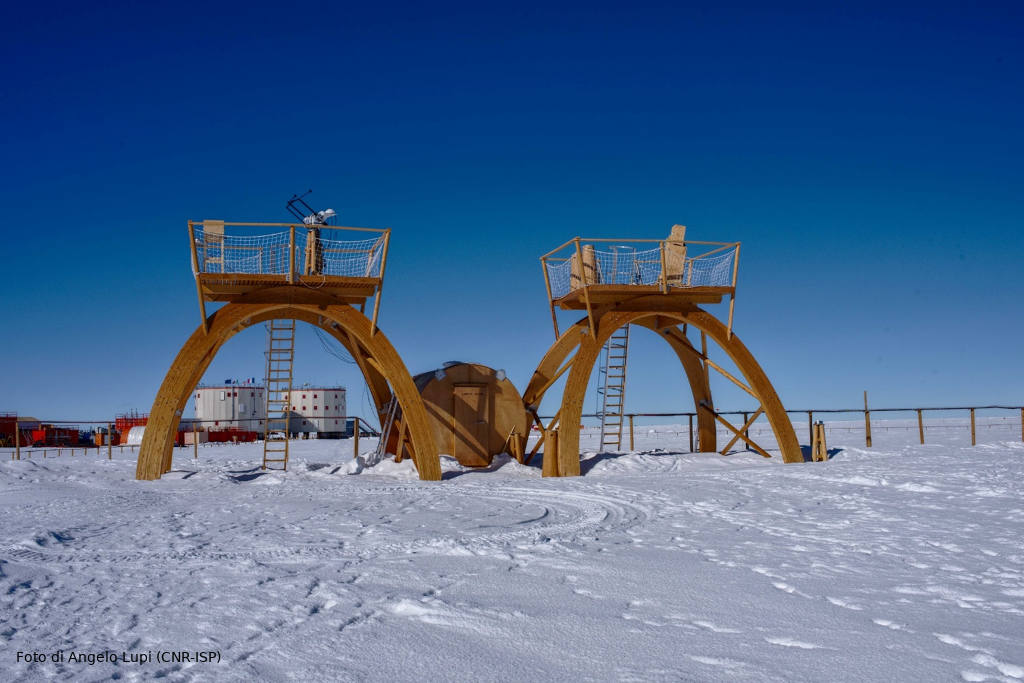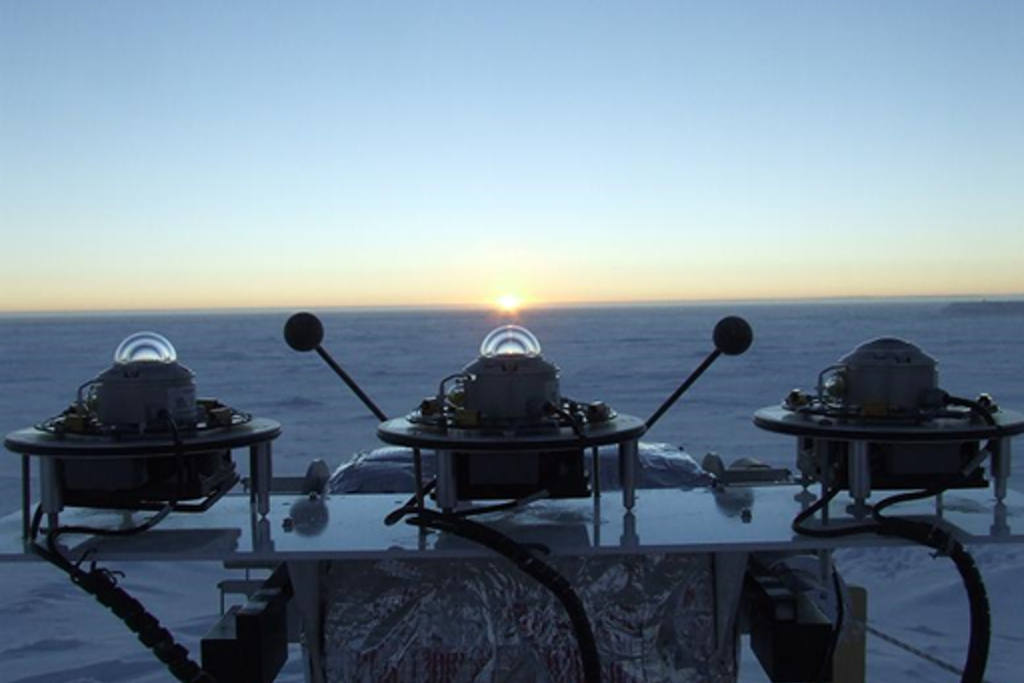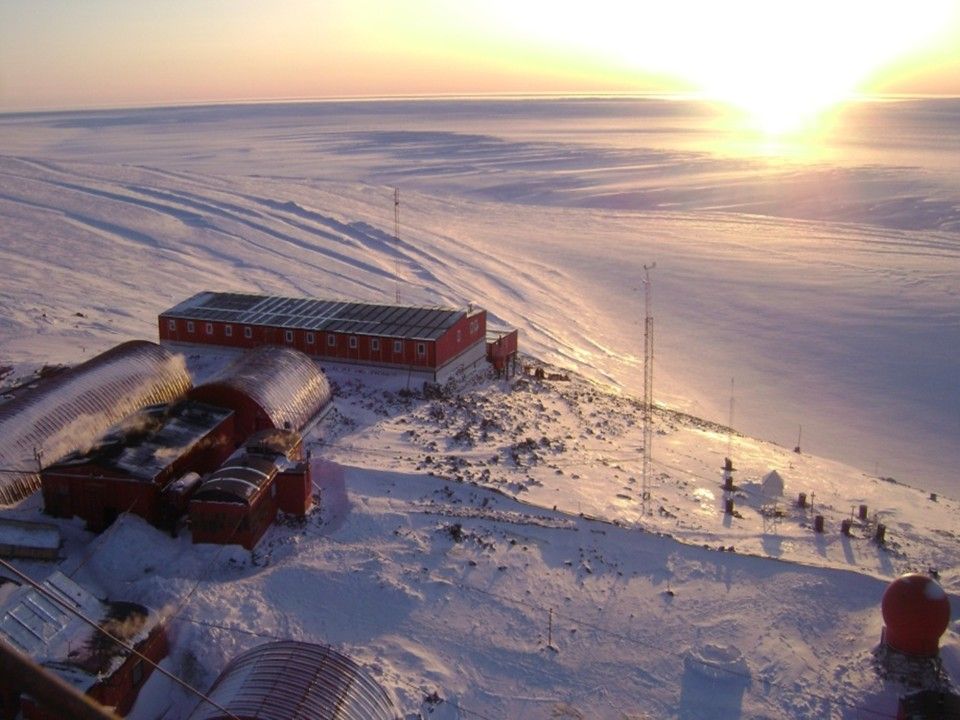YOPP
Type of resources
Topics
INSPIRE themes
Keywords
Contact for the resource
Provided by
Years
Formats
Representation types
Update frequencies
status
Scale
-

Basic and other measurements of radiation at Concordia Station during "January" "2019": for other details see the full metadata description at https://doi.pangaea.de/10.1594/PANGAEA.898659
-

Basic and other measurements of radiation at Concordia Station during "November" "2018": for other details see the full metadata description at https://doi.pangaea.de/10.1594/PANGAEA.896816
-

The knowledge of properties and quantitative measurement of solid precipitation in Antarctica is of fundamental importance as precipitation represents the main input of Antarctic ice sheet mass, the variations of which have a direct and non-negligible effect on the average level of the oceans at global scale. Characterization and quantification of the precipitation is crucial in defining and validating global climate models and numerical weather prediction models, as well as anchoring and validating space-borne remote sensing estimates from missions like CloudSAT and EarthCARE. A snow and cloud microphysics observatory has been set up at the Italian Antarctic station Mario Zucchelli (MZS), integrating the pre-existing instrumentation for weather measurements. In particular, a 24-GHz vertical pointing Doppler radar, the METEK's Micro Rain Radar 2 (MRR-2), and a laser disdrometer, the OTT Parsivel, have been integrated with the advanced weather stations, radiosoundings and the ceilometer already present at MZS. The synergy between the set of instruments allows for characterizing precipitation and studying properties of Antarctic precipitation such as dimension, shape, fall behavior, particle number density, particles size distribution, particles terminal velocity, reflectivity factor and information on their vertical extent. APP started as a four-year project in July 2017, covering the Special Observation Period (SOP) in the Southern Hemisphere of Year of Polar Predicition (YOPP) period. APP can provide specific measurements for precipitation occurring over the Antarctic coast at high temporal resolution, in particular specific snow products such as snow rate, snow depth and their water equivalent. In November 2023 the observatory received an additional instrument, the Thies Clima 3D Stereo imaging disdrometer, which was previously installed for one year in Italy for testing, at the Casale Calore (AQ) meteorological observation site from the University of L'Aquila. The research team of the first two years was coordinated by Nicoletta Roberto, with operational units at the Rome unit of the CNR-ISAC (Luca Baldini, Elisa Adirosi, Stefano Dietrich) and at the Department of Physics and Astronomy of the University of Bologna (Rolando Rizzi, Federico Porcù, Tiziano Maestri, Alessandro Bracci). From 2020 the coordination of the project passed to Luca Baldini (CNR-ISAC) and the work team was extended with the research fellows Giacomo Roversi and Sabina Angeloni.
-

Basic and other measurements of radiation at Concordia Station during "December" "2018": for other details see the full metadata description at https://doi.pangaea.de/10.1594/PANGAEA.897905
-
The current vision of global climatic changes stresses on the interlinked action of many factors, often more evident at regional scales. Polar regions are among the areas most sensitive to perturbations of the climate: through connections involving ocean, atmosphere, biosphere, lithosphere and cryosphere, they respond to, amplify, and drive changes elsewhere in the Earth system, so that understanding their role is essential. Peculiar characteristics of Polar Regions contribute to modify the energy and radiation budget, and the characteristics of the polar atmospheric boundary layer (ABL), increasing relevance at regional level of coupling processes between components of the climate system, especially in the coastal region. In particular, the long polar night, the sea-ice and snow coverage, favouring the persistency of stable atmospheric conditions, and the local and mesoscale circulation interactions, all affect the status and variability at different time scales of components of the regional climate system. Predicting future conditions of the polar regions is the goal of the Polar Prediction Project and of one of its key elements, the Year of Polar Prediction (YOPP, http://www.polarprediction.net/yopp.html), scheduled to take place from mid-2017 to mid-2019). This requires the scientific knowledge of their present status as well as a process-based understanding of the mechanisms of change. The parameterization of physical processes in regional and global hydrodynamical numerical models of the atmosphere is not yet enough accurate for a correct representation of all components of the climatic system and of their connections, the knowledge of which is needed to determine the role of polar regions in the global climate. As an example, more extended and integrated dataset are required to improve the parameterization of the ABL, for complex orography areas such as the polar coastal regions. The general scope of this project is to improve the understanding of the surface-atmosphere mass and energy exchanges at an Antarctic coastal site in the Ross Sea through continuous and accurate measurements of the atmospheric parameters, and development and verification of multiscale modelling, and through these activities, to address some of the relevant questions included in the roadmap for Antarctic and Southern Ocean science for the next two decades and beyond. Measurements will be carried out year-round at the new Korean Jang Bogo Antarctic Research Station (JBS), located at the coast of Terra Nova Bay, in the vicinity of the Italian Mario Zucchelli Station. Measurement and analysis of radiation components, atmospheric constituents and energy fluxes, meteorological and micrometeorological parameters, will be implemented jointly by Korea Polar Research Institute (KOPRI), CNR and UNIFI, in a way similar to the collaboration already active in the Arctic. Such implementation will be very useful to close a gap in the global climate observation system (GCOS) and contribute to WMO programs providing scientific data and information on meteorological and radiation regimes, vertical structure and chemical composition of the atmosphere.
-

The main goal of our proposal is to characterize the surface radiative budget as well as cloudiness which features at the Argentine Bases Marambio and Belgrano II during the YOPP-SH Special Observing Period (SOP) as well as the YOPP Consolidation Phase. Specific objectives to secure our main goal during the SOP will be: 1 - develop a compact Radiation Measurement UNIT (RMU) robust enough to allow continuous measurements in harsh environment through which to make shortwave, longwave observations as well as to record status of the sky. 2 - secure UV measurements at both stations. 3 - develop specific tools to analyse on a daily basis (weakly for clouds) collected data and extract parameters of interest. For radiation these will include QA/QC SW and LW downwelling and upwelling fluxes, diffuse and direct components of solar radiation, UV spectral flux and doses. For clouds these will include, on a continuous base, cloud fraction derived both from radiometric measurement and sky camera observations, cloud type and cloud effect on SW radiation. In addition cloud base (or cloud ceiling) will be obtained by routine observations performed at the two stations. From UV measurements columnar ozone content will be also derived. Moving forward to YOPP consolidation phase, we plan to: 1 - extend dataset and its analysis, start to collect information on seasonal and inter-annual variability, determine Cloud radiative Forcing (CRF) 2 - perform extensive comparison between automatic and visual cloudiness observation methods. They being very useful to better understand quality and value of historical datasets at the two stationsù 3 - make comparison with cloudiness regime of Ross Sea and Antarctic Plateau. Make similar comparison for UV fluxes in the Peninsula and at Concordia.